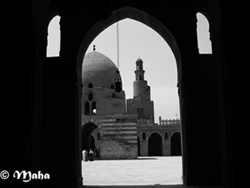“The best people are those of my generation, and then those who will come after them (the next generation), and then those who will come after them (i.e. the next generation),…” says a Hadith of the Prophet (pbuh) narrated by Imam Bukhari.
This is the origin from which stemmed the term ‘Salafi’, beyond any defiling as per modern claims associating the Salafi school of thought with fundamental and puritanical approaches.
Linguistically, the word Salafi is a derivative of the Arabic root Salaf or Past. And idiomatically it connotes “predecessor” or ancestor and usually refers to followers of the Islamic school of thought that especially reveres the Salaf, or people of the past, who lived through the early periods of Islam, particularly the Sahaba or Companions of the Prophet, PBUH, and took him as their sole role model in all aspects of life.
Historically, Salaf does not just represent the first generation of Muslims or the Companions of the Prophet (pbuh), but also includes the second generation, that is the Tabeyoun, or the Followers, and according to some scholars, also refers to the third generation, that is the Tabei al tabeyoun, or Followers of the Followers, who- together with the first two generations- are collectively referred to as the Pious Predecessors, or Al Salaf Al Salih.
They’re called so because they were privileged with an opportune chance of living close to the Prophet (pbuh) and following his footsteps in all general and minor details of living. They lived through the early stages of Islam and transmitted eye witness accounts of the life of the Prophet, witnessing the phase of the revelation and accompanying the foremost teacher of humanity, Muhammad, the Messenger of Allah, at the hands of whom, Allah sent down the final revelation and concluding the message of Monotheism.
The Companions of the Prophet, being one generation of the Salaf Al Salih, or the Pious Predecessors, constitute a credible legal source used by Islamic theologians in extracting legal Islamic rulings, which signify the level of authenticity their accounts represent.
Starting the fourth generation of Muslims onwards, the Salafi School of thought has been used by Sunni theologians as a means of detecting the pure form of Islam and creed as transferred by the early generations of Pious Processors, beyond any defilation or variations in Islamic legal methodology that later crept into the Muslim Ummah.
Among renowned icons of Salafi doctrine are the famous Muslim theologian Imam Ahmad ibn Hanbal, known as Imam Ahl al-Sunnah, as well as Imam Ibn Taymiyah and Imam Ibnul Qayyim.
On a later stage came Muhammad ibn Abd al-Wahhab, who adopted the Salafi thought, yet deviated a bit, enforcing relatively fundamental and radical thought. It’s widely believed that he was the one who planted the seed of fundamental school of Islam and is thus balmed for much misconception and misapplication of the balanced and original teachings of Islam. He is the founder of the so-called Wahabi School of Islamic thought.
Having listed all that the term comes to denote and connote, it now becomes clear that the truthful implications of Salafism beyond all tainted modern understandings equating it with radical thought, is simply adopting the true principles of Islam- the pure form of Islam.
By: The Muslim Tribune Staff Writer
Posted on: June 12, 2011


